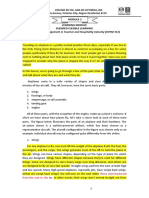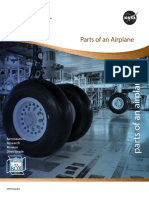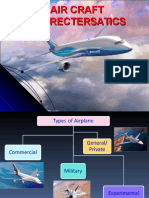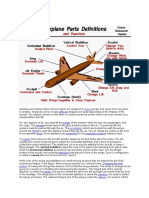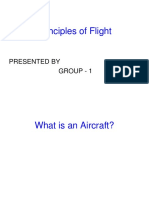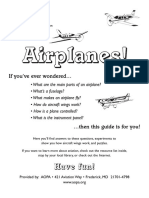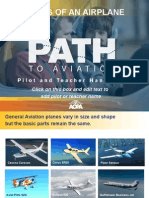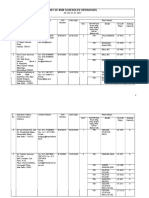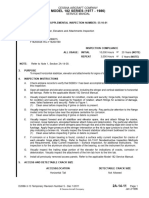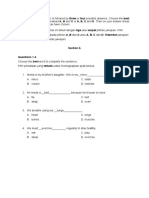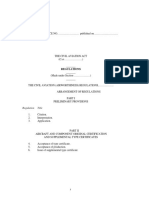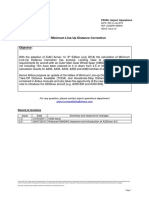0% found this document useful (0 votes)
192 views4 pagesAirplane Parts and Functions Guide
Airplanes are manufactured vehicles that transport people and cargo through the air faster than other modes of transportation like cars, trains, and ships. They come in different shapes and sizes depending on their intended use. Airplanes must generate enough lift to carry their own weight as well as passengers and luggage. Their key parts include wings to produce lift, jet engines for thrust, a cockpit for pilots to fly, a fuselage to hold everything together, and a tail with stabilizers and control surfaces to maintain balance and allow for pitching, yawing, and rolling movements.
Uploaded by
Vinay DesaiCopyright
© © All Rights Reserved
We take content rights seriously. If you suspect this is your content, claim it here.
Available Formats
Download as DOCX, PDF, TXT or read online on Scribd
0% found this document useful (0 votes)
192 views4 pagesAirplane Parts and Functions Guide
Airplanes are manufactured vehicles that transport people and cargo through the air faster than other modes of transportation like cars, trains, and ships. They come in different shapes and sizes depending on their intended use. Airplanes must generate enough lift to carry their own weight as well as passengers and luggage. Their key parts include wings to produce lift, jet engines for thrust, a cockpit for pilots to fly, a fuselage to hold everything together, and a tail with stabilizers and control surfaces to maintain balance and allow for pitching, yawing, and rolling movements.
Uploaded by
Vinay DesaiCopyright
© © All Rights Reserved
We take content rights seriously. If you suspect this is your content, claim it here.
Available Formats
Download as DOCX, PDF, TXT or read online on Scribd
/ 4












